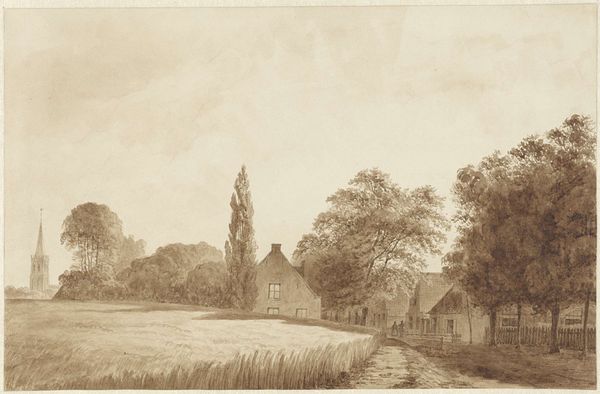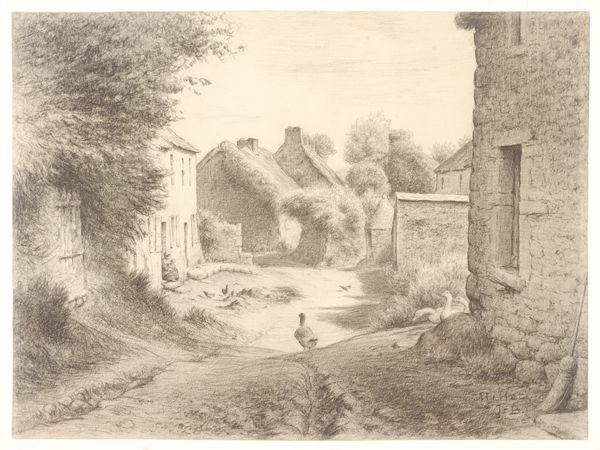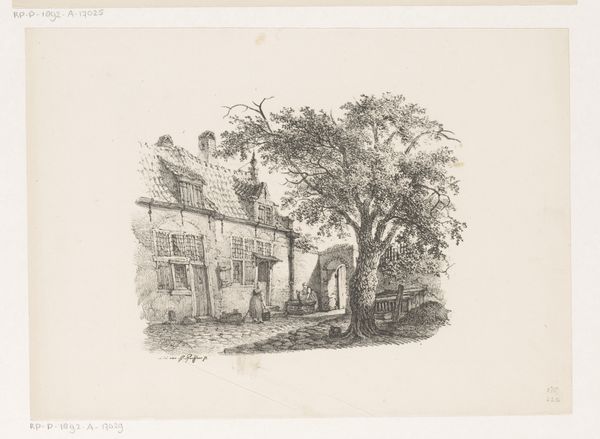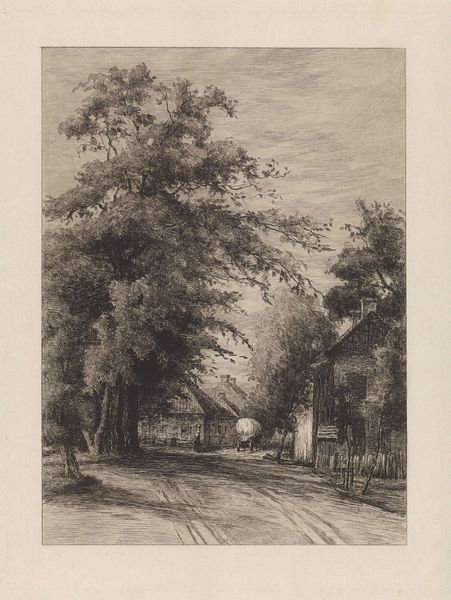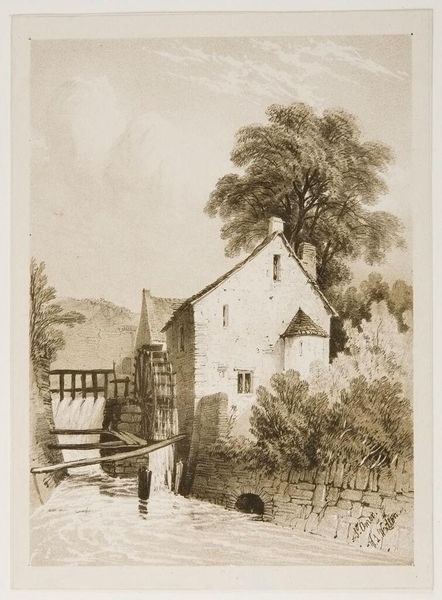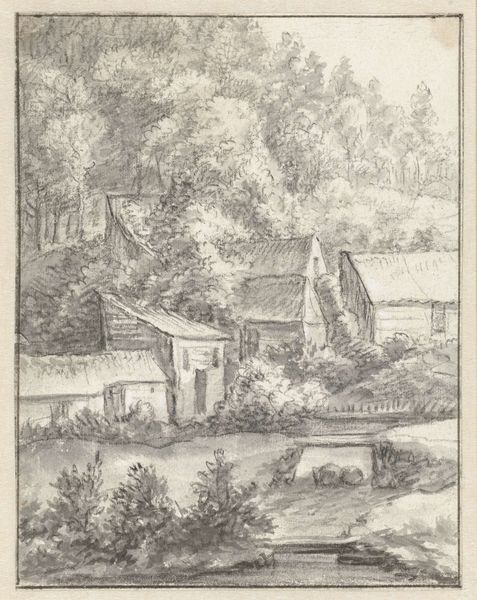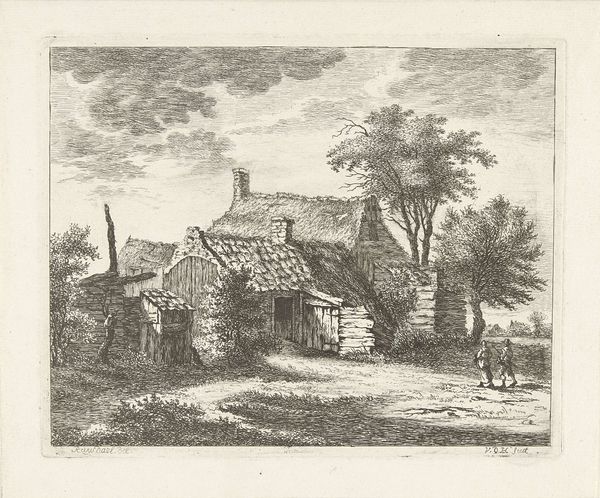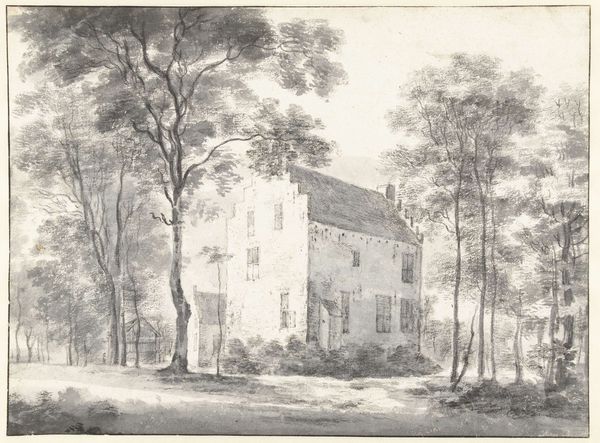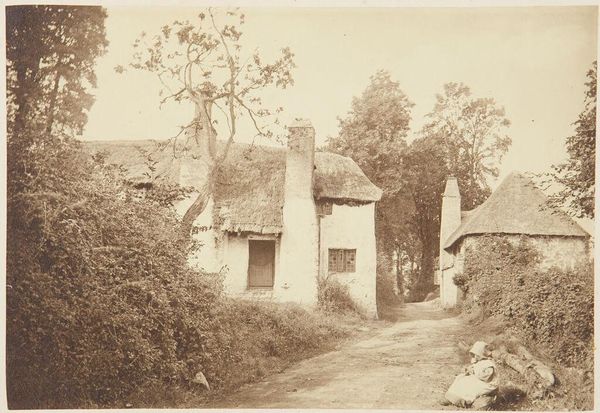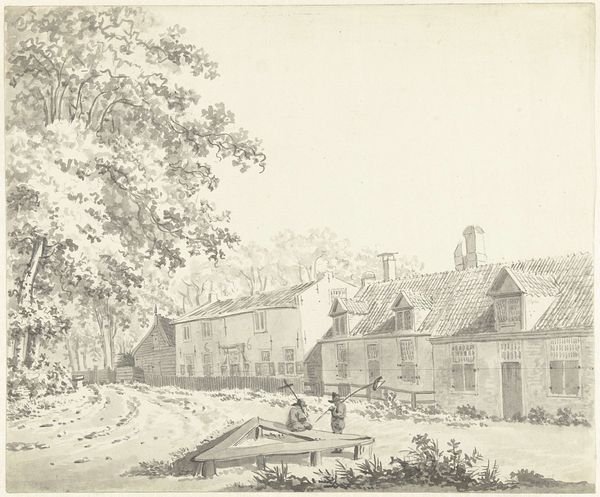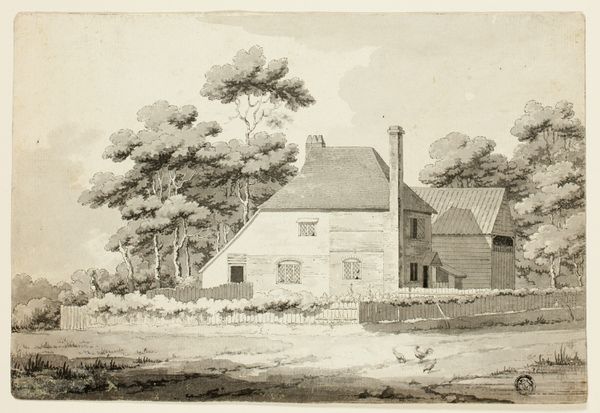
Dimensions: support: 269 x 192 mm
Copyright: CC-BY-NC-ND 4.0 DEED, Photo: Tate
Curator: William Henry Barnard, born in 1767, gives us this intimate view in "The Back of a House in Oxford," currently residing in the Tate Collections. It’s rendered on a relatively small support, roughly 27 by 19 centimeters. Editor: It has a quiet, almost secretive air to it. The muted tones and the dense trees lining the right side evoke a sense of enclosure, of private lives unfolding behind closed doors. Curator: The choice of subject matter is key. Barnard presents the mundane reality of a domestic space, turning away from grand historical narratives to something more personal. Editor: Precisely. Houses are powerful symbols, archetypes of shelter and family. The unadorned quality of the architecture suggests a focus on function rather than ostentation. Curator: The lack of a specific date makes contextualising it a bit difficult, but the architecture suggests a long history, likely predating Barnard's lifetime. Editor: It certainly feels timeless. The stark contrast between light and shadow gives the scene a dramatic intensity. Curator: Indeed. I find myself pondering how such an ordinary place becomes meaningful. It probably reflects the values of the rising middle class who appreciated their own familiar settings, separate from the aristocracy. Editor: Yes, it's not about a grand estate; it's about the home. I now see that the image invites introspection about our own relationship with place. Curator: Thank you. Editor: Of course.
Comments
tate 8 months ago
⋮
http://www.tate.org.uk/art/artworks/barnard-the-back-of-a-house-in-oxford-t08129
Join the conversation
Join millions of artists and users on Artera today and experience the ultimate creative platform.
tate 8 months ago
⋮
William Barnard, the son of an Irish parson, was a pupil of John Baptist Malchair (no. 24) when an undergraduate at Oxford. Of all Malchair's pupils, it is perhaps Barnard whose work is most readily confused with that of his teacher. Barnard tended to favour the same sort of humble, inconsequential subject that Malchair had found in the alleyways and back streets of Oxford. Malchair's pupils were encouraged to work in monochrome (pencil, chalks and grey washes) rather than watercolour. They were also taught to describe form using tone and mass rather than outline. Gallery label, September 2004
